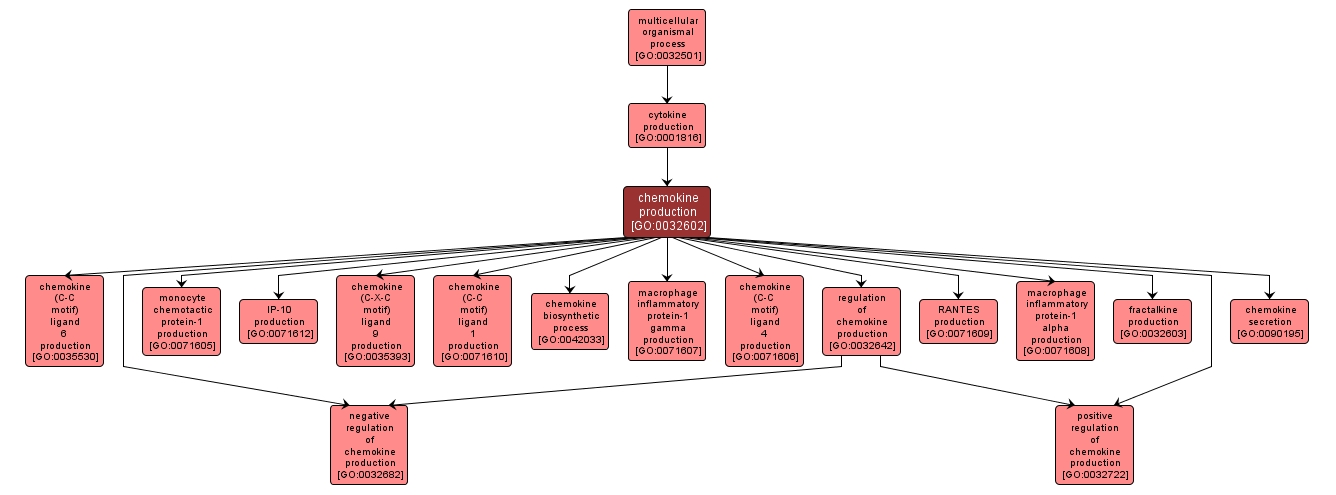GO TERM SUMMARY
|
| Name: |
chemokine production |
| Acc: |
GO:0032602 |
| Aspect: |
Biological Process |
| Desc: |
The appearance of a chemokine due to biosynthesis or secretion following a cellular stimulus, resulting in an increase in its intracellular or extracellular levels. |
|

|
INTERACTIVE GO GRAPH
|














